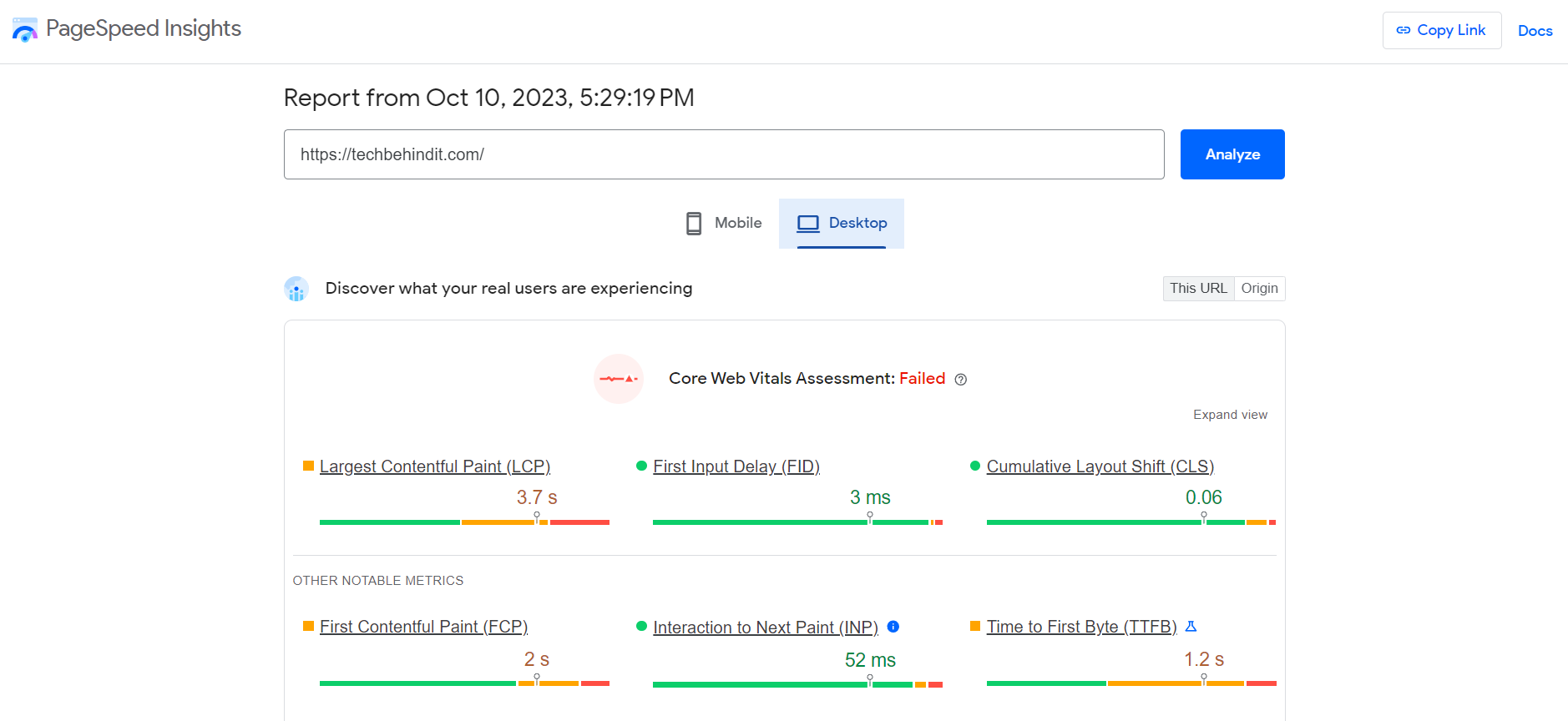Your Website Deserves a Check-up: Performing an In-depth SEO Audit for Better Online Performance
- 1 Why an SEO Audit is Important?
- 2 Pre-Audit Checklist
- 2.1 Set clear objectives
- 2.2 Gather data
- 2.3 Conduct a website crawl
- 2.4 Check indexing status
- 2.5 Evaluate site speed
- 2.6 Review metadata and URL structure
- 2.7 Check for mobile-friendliness
- 2.8 Analyze competitors
- 3 Analyzing Your Website’s Architecture
- 4 Reviewing On-page Optimization Factors
- 5 Assessing Content Quality
- 5.1 Relevance
- 5.2 Readability
- 5.3 Originality
- 5.4 Formatting
- 5.5 Keyword Optimization
- 6 Examining Backlink Profile
- 7 Checking Mobile Responsiveness
- 8 Testing Website Speed
- 9 Identifying Technical Issues
- 10 Creating an Action Plan
Search Engine Optimization (SEO) is essential to any website’s success. An SEO audit is a comprehensive analysis of your website’s performance, content, and usability to ensure it meets the needs of search engines and your target audience.
In this blog post, we’ll discuss the importance of an in-depth SEO audit and why it should be part of your regular website maintenance routine. We’ll also provide some tips on performing a comprehensive SEO audit to take your website’s performance to the next level.
Why an SEO Audit is Important?
A well-optimized website is crucial for success in the fast-paced and highly competitive online world. This is where a comprehensive SEO audit comes into play. But why is it so important? Well, for starters, an SEO audit provides you with valuable insights into the current state of your website’s performance, content, and usability.
By conducting a thorough analysis, you’ll be able to identify any areas that need improvement, such as slow loading times, broken links, or outdated content. These issues can negatively impact your website’s visibility on search engine result pages (SERPs), organic traffic, and conversions.
Furthermore, an SEO audit allows you to stay ahead of your competition. By keeping tabs on the latest industry trends and search engine algorithms, you can make necessary adjustments to ensure your website remains relevant and visible to your target audience.
Regularly performing an SEO audit demonstrates to search engines that you are committed to providing a positive user experience. Search engines, like Google, reward websites that prioritize user experience by ranking them higher in SERPs. If you feel you can’t do it alone, click here and get all the help you want: https://www.fortismedia.com/en/services/seo-audit/.
Pre-Audit Checklist
Performing a thorough SEO audit requires careful planning and preparation. Before diving into the analysis, it’s essential to have a pre-audit checklist to ensure that you cover all the necessary aspects of your website. Here’s a checklist to get you started:
Set clear objectives
Determine what you want to achieve from the SEO audit. Are you looking to increase organic traffic, improve website visibility, or enhance user experience? Clearly define your goals before you begin.
Gather data
Collect all relevant data about your website’s performance, such as traffic metrics, conversion rates, and keyword rankings. This will be a benchmark for measuring improvements during and after the audit.
Conduct a website crawl
Use a website crawling tool to analyze the structure and organization of your site. Check for any crawl errors, broken links, or duplicate content that might impact your SEO performance.
Check indexing status
Verify if search engines properly index your website. Use tools like Google Search Console to ensure all your important pages are being crawled and indexed.
Evaluate site speed
Website loading speed is crucial for user experience and SEO. Run speed tests to identify any areas where improvements can be made, such as optimizing images or minimizing code.
Review metadata and URL structure
Analyze your website’s metadata, including title tags, meta descriptions, and URL structure. Ensure they are optimized with relevant keywords and accurately reflect the content of each page.
Check for mobile-friendliness
With most internet users accessing websites from mobile devices, having a mobile-friendly site is essential. Test your website’s responsiveness on different devices and screen sizes to ensure a seamless experience for mobile users.
Analyze competitors
Look at your competitors’ websites to gain insights into their SEO strategies. Identify their strengths and weaknesses to understand better how you can differentiate yourself and improve your website.
Analyzing Your Website’s Architecture
Now that you have completed the pre-audit checklist, it’s time to analyze your website’s architecture. This step is crucial because how your website is structured and organized can significantly impact its performance in search engine rankings.
Start by examining your website’s URL structure. Are your URLs clean and user-friendly? Do they contain relevant keywords that accurately describe the content of each page? Optimize your URLs to make them more search engine friendly and more accessible for users to navigate.
Next, take a close look at your website’s navigation. Is it intuitive and easy to follow? A well-organized navigation structure helps search engines understand the hierarchy of your content and improves user experience. Ensure that your navigation is clear, logical, and properly labeled.
Consider the internal linking structure of your website as well. Internal links help search engines discover and index your pages more effectively. Ensure your internal links are relevant, descriptive, and strategically placed throughout your website.
Lastly, evaluate your website’s XML sitemap. An XML sitemap is a file that lists all the essential pages on your website and helps search engines understand the organization of your content. Ensure your XML sitemap is current and accurately reflects your website’s structure.
Reviewing On-page Optimization Factors
Now that you have analyzed your website’s architecture, it’s time to shift our focus to reviewing on-page optimization factors. On-page optimization is crucial in improving your website’s visibility and relevance to search engines. By optimizing various elements on your web pages, you can increase your chances of ranking higher in search engine results.
One important factor to review is your website’s title tags. Title tags are the HTML elements that define the title of a web page and appear as the clickable headline in search engine results. Ensure that your title tags are concise and descriptive and include relevant keywords that accurately reflect the content of each page.
Next, evaluate your meta descriptions. Meta descriptions are the snippets of text that appear below the title tags in search engine results. They provide a brief summary of the page’s content. Optimize your meta descriptions by making them compelling, engaging, and informative. Include relevant keywords to attract users’ attention and encourage them to click through to your website.
Another crucial aspect of on-page optimization is the use of header tags. Header tags (H1, H2, H3, etc.) help search engines understand the hierarchy and structure of your content. Use header tags to organize your content and make it easier for search engines and users to navigate your web pages.
In addition to these elements, review your keyword usage and placement throughout your website’s content. Conduct keyword research to identify relevant and high-ranking keywords and strategically incorporate them into your page titles, headings, body text, and image alt text.
Remember to optimize your images using descriptive file names and adding alt text. This helps search engines understand the content of your images and can contribute to improved visibility in image search results.
Lastly, review your URL structure. Ensure your URLs are clean, concise, and descriptive, and include relevant keywords where appropriate. This makes it easier for search engines and users to understand the content of your web pages.
Assessing Content Quality
When it comes to search engine optimization, content is king. That’s why assessing the quality of your website’s content is an important step in conducting a comprehensive SEO audit. High-quality, relevant, and engaging content not only attracts and retains visitors to your site but it also signals to search engines that your website is authoritative and worthy of a higher ranking.
During the content assessment phase, you should evaluate the following aspects:
Relevance
Is your content relevant to your target audience? Does it address their needs and provide valuable information or solutions? Ensuring your content aligns with your audience’s interests and intent is essential for user satisfaction and search engine optimization.
Readability
Is your content easy to read and understand? Is it free of grammatical errors and typos? A clear and concise writing style is user-friendly and helps search engines better comprehend and index your content.
Originality
Is your content unique? Avoid duplicating or plagiarizing content from other sources. Unique and original content attracts readers and improves your website’s visibility and credibility in search engine rankings.
Formatting
Is your content well-structured and properly formatted? To organize your content, use headings, subheadings, bullet points, and paragraphs. This enhances readability and helps search engines understand the hierarchy and importance of different sections of your content.
Keyword Optimization
Are you incorporating relevant keywords into your content naturally? Use keyword research to identify the right keywords to target and strategically include them in your content. However, be mindful of keyword stuffing, which can negatively impact user experience and search engine rankings.
Examining Backlink Profile
Backlinks are an essential component of any successful SEO strategy. They are links from other websites that point back to your website and play a crucial role in determining your website’s authority and credibility in the eyes of search engines. This section will discuss the importance of examining your website’s backlink profile as part of your SEO audit.
When examining your backlink profile, you’ll want to evaluate the quality and quantity of your backlinks. Quality backlinks come from reputable and relevant websites, while quantity refers to the total number of backlinks pointing to your site. Ideally, you want a good balance of both.
Start by analyzing the anchor text of your backlinks. Anchor text is the clickable text within a hyperlink, and it should accurately describe the content of the page it’s linking to. Ensure that your anchor text is varied and natural and includes relevant keywords where appropriate. Avoid using exact match anchor text excessively, as it can raise red flags for search engines.
Next, review the domain authority of the websites linking to you. Domain authority is a metric that measures the strength and trustworthiness of a website. Backlinks from high-authority websites can significantly boost your own website’s authority and search engine rankings.
Another essential aspect to consider is the diversity of your backlinks. Having backlinks from various domains and IP addresses signals to search engines that your website is trustworthy and popular.
Finally, keep an eye out for any toxic or spammy backlinks. These low-quality links from untrustworthy sources can harm your website’s reputation and search engine rankings. If you find any toxic backlinks, it’s vital to disavow them using Google’s disavow tool.
Checking Mobile Responsiveness
In today’s mobile-dominated world, having a mobile-responsive website is no longer an option; it’s necessary. With more and more people accessing the internet through their smartphones and tablets, your website must be optimized for mobile devices. That’s why checking mobile responsiveness is crucial in a comprehensive SEO audit.
Mobile responsiveness refers to how well your website adapts to different screen sizes and devices. A mobile-responsive website automatically adjusts its layout and design to provide an optimal browsing experience for mobile users. It ensures your content is easily readable, buttons are clickable, and images are properly displayed on smaller screens.
To check the mobile responsiveness of your website, start by testing it on different devices, such as smartphones and tablets, with varying screen sizes. Navigate through your website and ensure all elements are functioning properly and the text is legible without zooming in.
Pay attention to page loading times on mobile devices as well. Slow-loading pages can lead to high bounce rates and frustrated users. Use tools like Google’s PageSpeed Insights to assess your website’s performance and identify any improvement areas.
Testing Website Speed
Website speed is a critical factor in user experience and search engine optimization. In today’s fast-paced online world, users have little patience for slow-loading websites. Visitors will likely leave and find a faster alternative if your website takes too long to load. Additionally, search engines like Google consider website speed as one of the ranking factors in their algorithms. A slow website can negatively impact your search engine rankings and organic traffic.
You can test your website speed using various tools such as Google’s PageSpeed Insights, GTmetrix, or Pingdom. These tools analyze your website’s performance and provide valuable insights on areas for improvement. They measure key metrics such as page load time, server response time, and resource sizes.
During the speed testing process, pay attention to any recommendations or warnings the tools provide. They may suggest optimizing image sizes, enabling browser caching, minifying code, or reducing server response time. Implementing these recommendations can significantly improve your website’s speed and user experience.
Identifying Technical Issues
Identifying technical issues is a crucial step in conducting a comprehensive SEO audit. Technical issues can significantly impact your website’s performance, user experience, and search engine rankings. By identifying and fixing these issues, you can ensure your website runs smoothly and effectively.
One common technical issue to look out for is broken links. Broken links occur when a link on your website leads to a no longer existing page or returns an error. Not only do broken links create a poor user experience, but they also negatively affect your website’s crawlability by search engines.
Another technical issue to be aware of is duplicate content. Duplicate content refers to having identical or very similar content on multiple website pages. This can confuse search engines and lead to a lower ranking for your website. By identifying and consolidating duplicate content, you can improve your website’s visibility in search engine results.
Additionally, it’s essential to check for proper indexing of your website’s pages. Ensure that all your important pages are being crawled and indexed by search engines. If any pages are not being indexed, it may be due to technical issues that must be resolved.
Creating an Action Plan
Now that you’ve completed a thorough SEO audit of your website, it’s time to create an action plan based on your findings. This plan will outline the specific steps you need to take to address any issues and optimize your website for better online performance.
Start by prioritizing the issues you discovered during the audit. Identify which ones have the most significant impact on your website’s performance and visibility. This will help you focus your efforts on the areas that will provide the greatest results.
Next, break down each issue into actionable tasks. Be specific about what needs to be done, who will be responsible for each task, and set a realistic timeline for completion. This will ensure that everyone involved understands their role and can work towards a common goal.
Consider implementing best practices and recommendations that you came across during the audit. For example, if your website has slow loading times, research and apply techniques to optimize your site speed. If your content quality needs improvement, develop a content strategy to address any gaps and provide valuable and relevant content for your audience.
Regularly monitor and track the progress of your action plan. This will allow you to see the impact of your optimizations and make adjustments if necessary.























